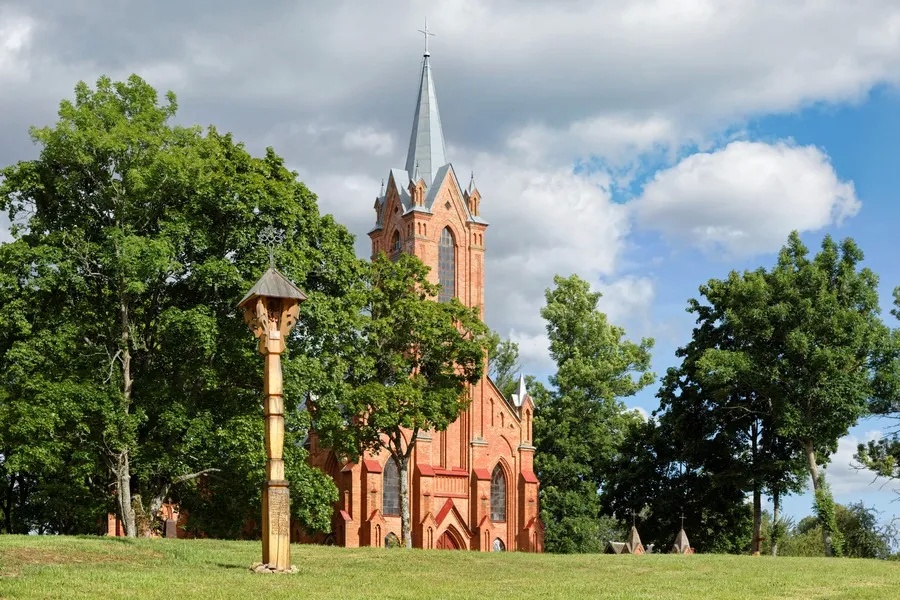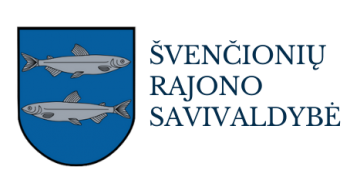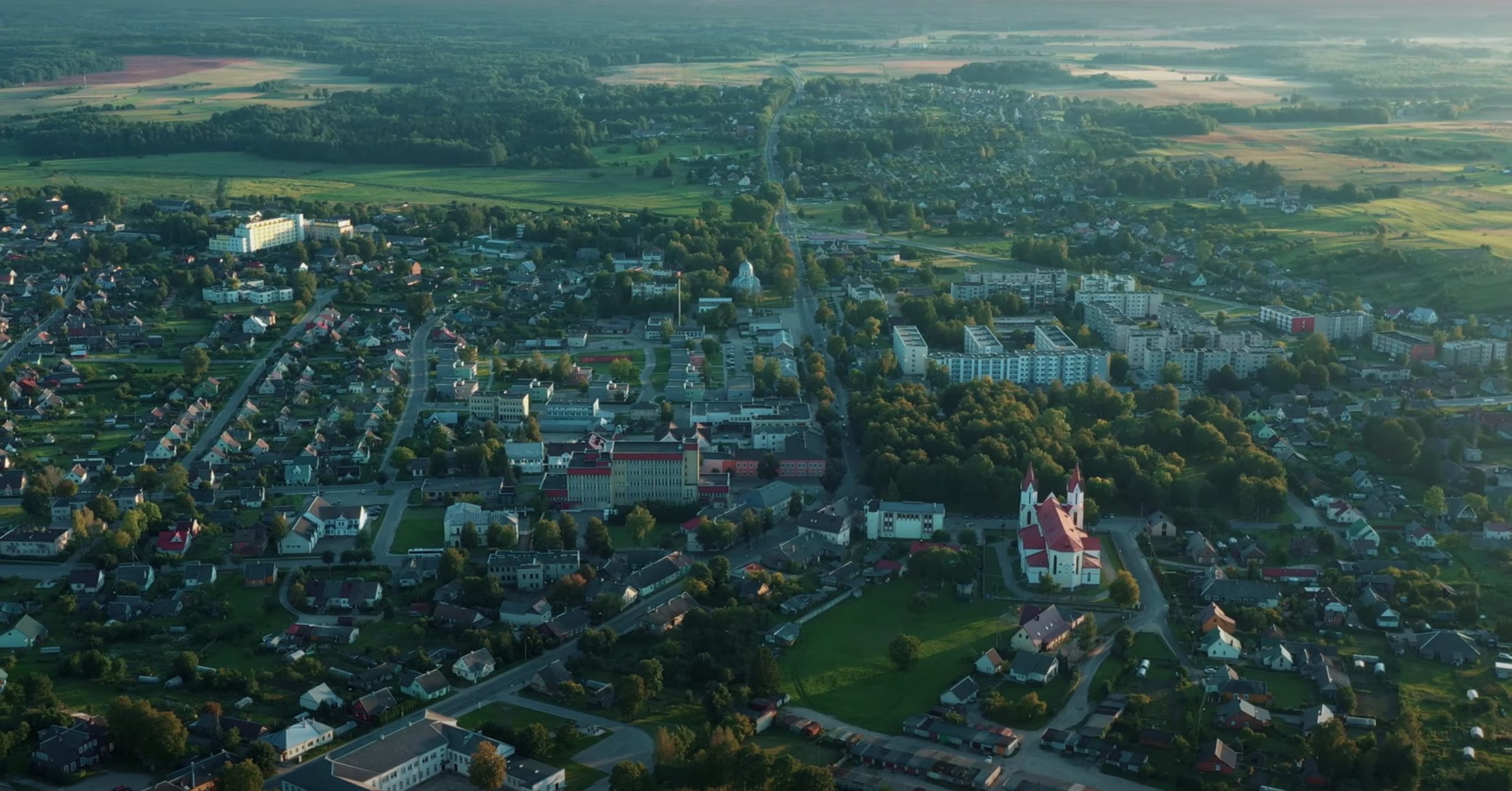
The center of the eldership is Kaltanėnai, located 26 km from Švenčionys. 239 people live in Kaltanėnai. There are 29 settlements in the eldership. Larger – Ožkiniai, Kukliai, Berniūnai, Šakališkė. The eldership is located on the eastern outskirts of the district.
The hydrographic network consists of the rivers Žeimena and Kiaunė. Žeimena is a large river, it starts in Kaltanėnai and flows into the Neris. The length of Žeimena is 80 km. The area of the basin from which it collects water is 2 792.7 km², i.e., it is one and a half times the area of the district. 31% of the basin surface is covered by forests, 10% by swamps and 7% by lakes. In Kaltanėnai, where it flows from Lake Žeimenis, the average annual water content is about 27 m³ / sec. Žeimena is a river of plains. There is a stretch of sand dunes, which continues on the southeastern slope of the Aukštaičiai Uplands. People have used Žeimena for traveling since ancient times – since the Stone Age. With the emergence of land roads, the importance of Žeimena as a waterway has diminished. However, the river remained important – it was used to transport rafts.
Kaltanėnai is located in the territory of Aukštaitija National Park and Labanoras Regional Park. Birch groves, spruce and pine forests grow here. The forests are home to larger ungulates (boars) and a number of predators (foxes, raccoon dogs, etc.).
Kaltanėnai manor – Kaltanėnai was mentioned in written sources as a manor in 1432 – 1440 and from the 17th century – as a town. In 1633 a church was built, a Franciscan monastery was established, and a school was attached to it.
In 1832 Franciscan monastery and school were closed. In 1833 an army unit was housed in the premises of the former monastery. These buildings were later left to the will of fate.
The Kaltanėnai church was also affected. In 1654 – 1667, during the war it burned down. It was rebuilt in 1696. In 1740 – 1767 a new wooden church with an octagonal belfry was built in Kaltanėnai.
In 1902 the project for the reconstruction of the monastery into a church prepared by the architect A. Filipovičius-Dubovikas was approved; based on which in 1903-1909 by the care of the pastor Mykolas Meštikis a memorial stone was erected on the site of the altar where the wooden church stood, the Latin inscription of which read “there was a church here”.
The church of Kaltanėnai had many hosts during its short age. Two of them lay in the churchyard for eternal rest: priest M. Meštikis was burried in 1916 and a monk priest, doctor of theological sciences Norbertas Skurskis died in Kaltanėnai in 1973.
The land of Kaltanėnai has raised many famous people. One of them is a member of the Seimas of the Republic of Lithuania, Signatory of the Act of Independence of Lithuania, habil. dr. Kazimiera Danutė Prunskienė (b. 1943). Significant works were created by the distributor of the Lithuanian press, the disseminator of sobriety ideas, priest Jonas Burba (1851 – 1915); K. Baužys, sponsor of booksellers, founder of a secret Lithuanian school; organist Jonas Petrauskas (1873 – 1937); writers Gediminas Isokas, Leonardas Grudzinskas; geographer prof. Česlovas Kudaba (1934 – 1993); conservationist, botanist Kęstutis Balevičius.
The history of the school is closely connected with that of the Franciscan monks, who in 1633 by the invite of Jonas Narbutas settled in Kaltanėnai. In 1781 Franciscans at the monastery begin to teach 4 students, and in 1797 a two-class school was already in operation. From year 1803 to 1805 42 students studied there. The language of education was Polish. After 1831 uprising the monastery emptied. The tsar’s government also closed the school. In 1920 Kaltanėnai was occupied by the Polish and they remained in power until 1939, but the surroundings remained Lithuanian. Pastor M. Meštikis introduced Lithuanian chants. Around 1936-1937 the school was rebuilt. While the new school was being built classes were held in the parish hall next to the church and in the Jewish house (later there was a school workshop, now occupied by people). After Vilnius was returned to Lithuania, everything changed in Kaltanėnai: Lithuanian language returned to school, the school became the main primary school. At present Kaltanėnai Education and Tourism Center is established on its premises. This center is still the only educational and tourism institution in Lithuania, which, in addition to the main non-formal education program for children and various tourism services, provides both pre-school and primary education programs. Every year many interesting events are organized – meetings, tourist trips.
Contacts:
Švenčionėlių st. 34, LT-18239
Kaltanėnai,
Švenčionys district,
Tel. (8 387) 41 402, 41 403
Fax. (8 387) 41 402
E-mail kaltanenai@svencionys.lt

